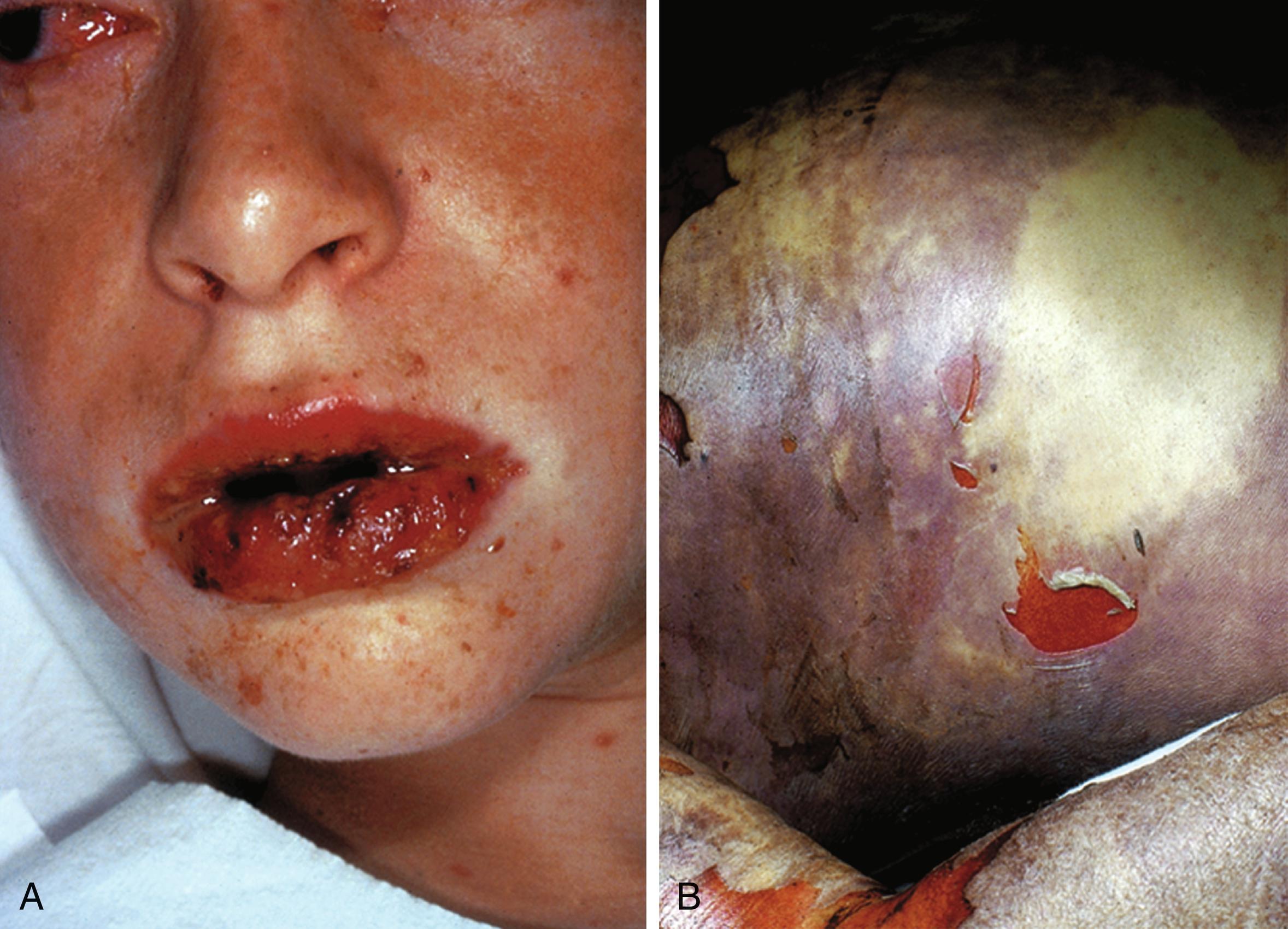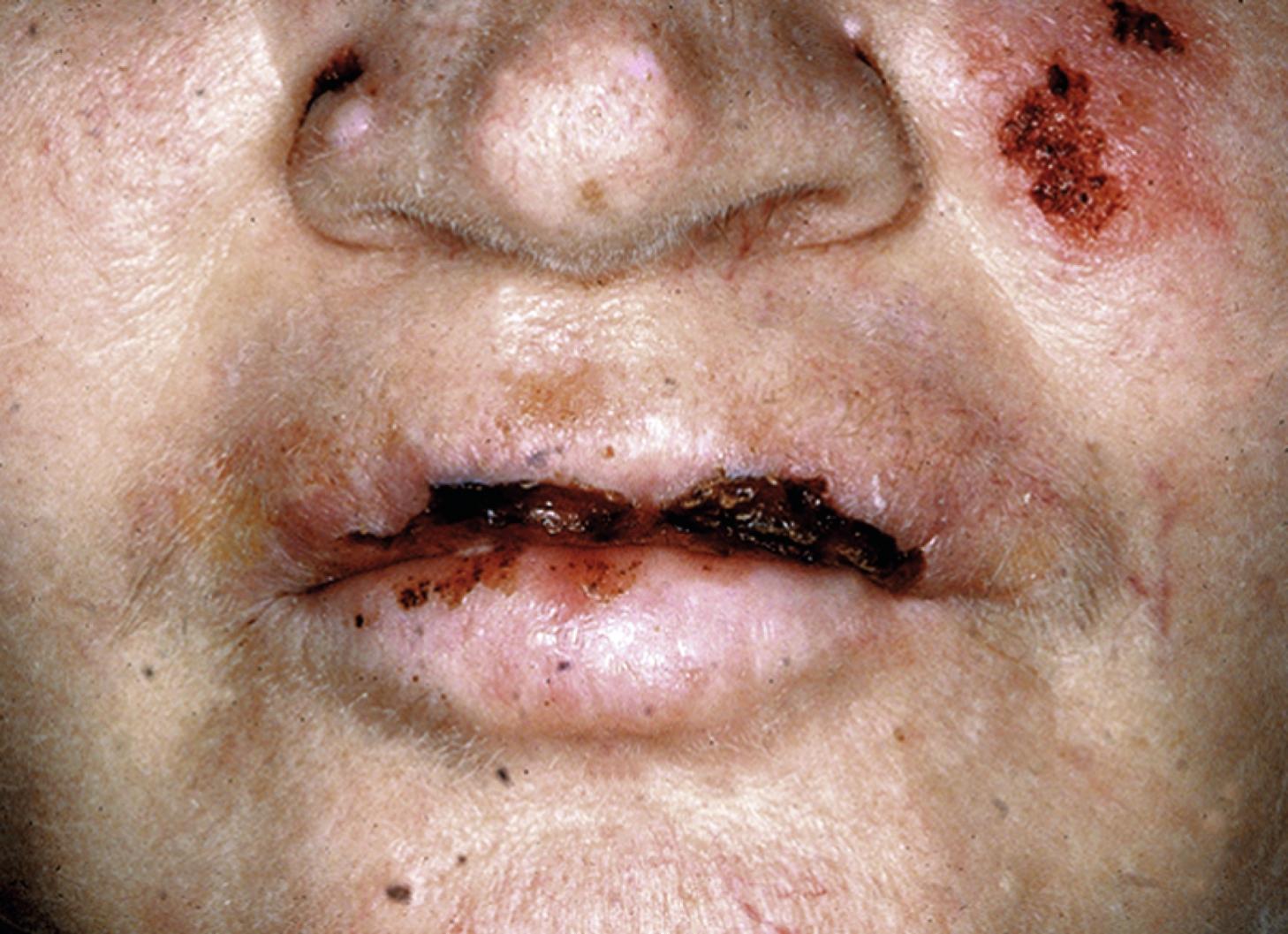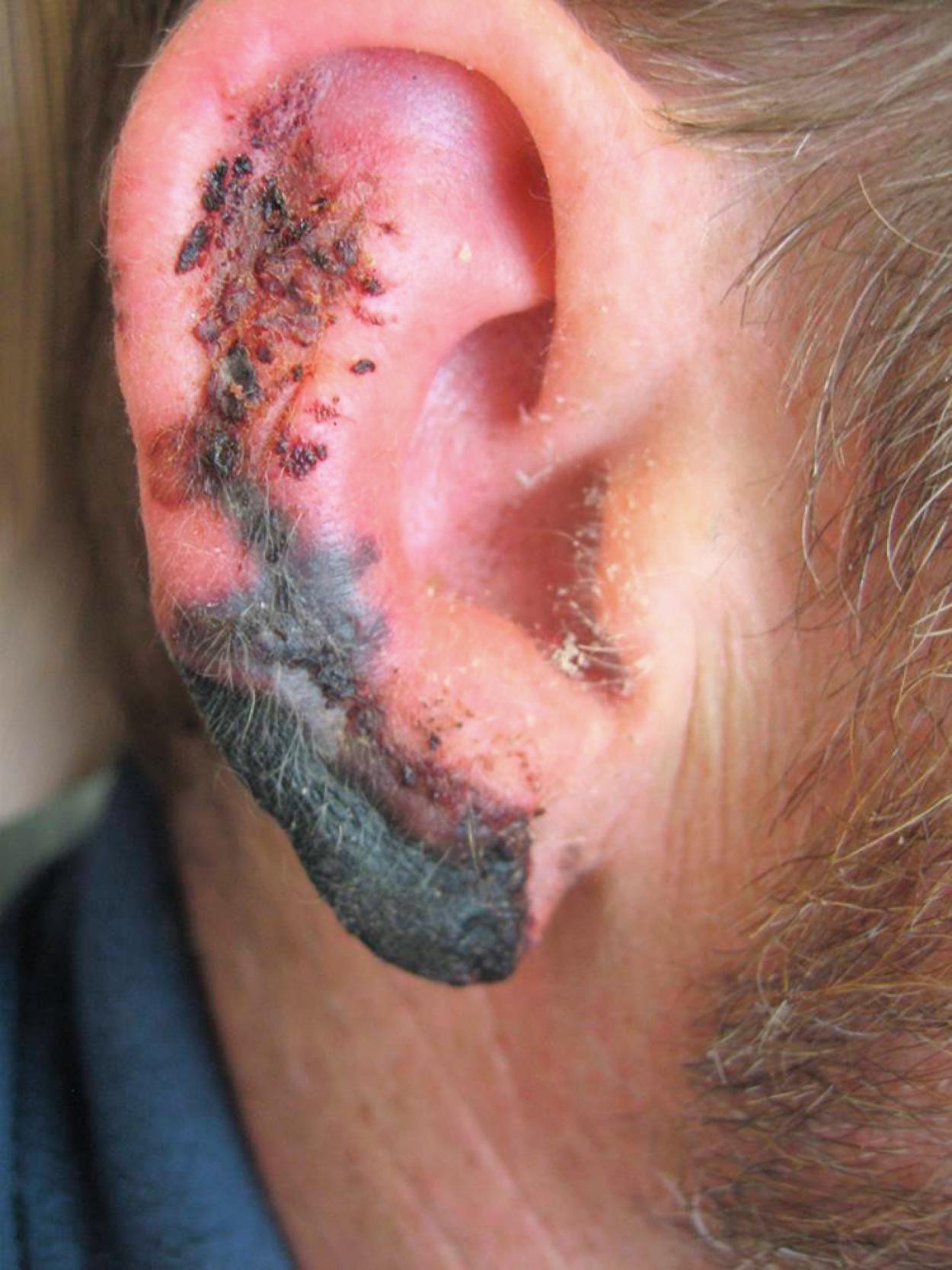Physical Address
304 North Cardinal St.
Dorchester Center, MA 02124
Yes, while perhaps not as ubiquitous as other areas of medicine, there are some dermatologic emergencies. In some of these emergent conditions, the skin is the primary organ affected (pemphigus vulgaris [PV]), while in others, the cutaneous manifestations an important diagnostic clue to a severe underlying condition (meningococcemia). Prompt recognition of dermatologic emergencies is important because these conditions can be morbid or lethal but can be treated successfully, particularly early in the course of the disease.
Vesiculobullous disorders and drug reactions: Stevens-Johnson syndrome (SJS), toxic epidermal necrolysis (TEN), drug reaction with eosinophilia and systemic symptoms (DRESS), PV
Serious infections: acute meningococcemia, Rocky Mountain spotted fever (RMSF), disseminated herpes/zoster in immunocompromised persons
Autoimmune disorders : acute cutaneous eruption of systemic lupus erythematosus (SLE)
Serious inflammatory conditions: desquamative erythroderma, acute pustular psoriasis (of von Zumbusch), pustular psoriasis of pregnancy (impetigo herpeticum)
Environmental/exogenous disorders: heat stroke, child abuse, elderly abuse
While not without controversy, it is now most widely accepted that SJS and TEN exist on a spectrum.
SJS —skin lesions limited to less than 10% of the body surface area with two mucosal membranes affected in 92% to 100% of patients.
SJS/TEN “overlap” syndrome —skin involvement of greater than 10% but less than 30% of body surface area
Toxic epidermal necrosis —full-thickness leads to sloughing of greater than 30% of the body surface area and mucous membranes are involved in nearly all cases.
Because SJS and TEN have different prognoses and variations in treatment and therapy, it is important to differentiate between them ( Table 65.1 ). The diseases can usually be distinguished by their clinical presentation ( Fig. 65.1 ), histologic findings, and course.
| TEN | SJS | |
|---|---|---|
| Maximal intensity | 1–3 days | 7–15 days |
| Skin pain | Severe | Minimal |
| Mucosal involvement | Mild | Severe |
| Lesional pattern | Diffuse erythema, exfoliation ⁎ | Annular and targetoid lesions |
| Skin histology | Few inflammatory cells | Numerous inflammatory cells |
| Prognosis | Poor | Excellent |
⁎ Many authorities require more than 30% exfoliation of the total body surface.

Mockenhaupt M. Stevens-Johnson syndrome and toxic epidermal necrolysis: clinical patterns, diagnostic considerations, etiology, and therapeutic management. Semin Cutan Med Surg. 2014;33:101–116.
Discontinuation of any offending medication is always a cornerstone of therapy. However, since SJS appears to be immunologically mediated, it may respond to systemic corticosteroids and/or cyclosporine. Extremely mild presentations of SJS may not require systemic therapy, at all, if the offending medication is promptly discontinued. Patients with more severe SJS, especially with involvement of the oral mucosa, which interferes with eating and fluid intake, may be treated with a short course of high-dose systemic corticosteroids to abort the disease.
In addition to discontinuing the suspected drug(s), patients should be treated as burn patients with transfer to a burn unit, or an intensive care unit if a burn unit is not available. This will allow for appropriate supportive care to maintain fluid balance, monitor for infection, and prevent adult respiratory distress syndrome. Therapies that have been used or advocated include systemic corticosteroids, intravenous immunoglobulin (IVIG), plasmapheresis, cyclosporine, biologics, and a variety of other immunosuppressive drugs. The effectiveness of any of these therapies remains controversial, and without strong evidence. Most recently, the use of IVIG, associated with great expense, has been cast into doubt. There is limited evidence that cyclosporine has both a beneficial mortality benefit and a relatively safe side effect profile.
Gilbert M, Scherrer LA. Efficacy and safety of cyclosporine in Stevens-Johnson syndrome and toxic epidermal necrolysis. Dermatol Ther. 2019;32:e12758.
In a systematic review of numerous studies from burn units, the overall mortality was 30% in burn centers. The medical literature suggests that the mortality rate of patients with TEN in non–burn centers is approximately 45%. SCORETEN represents a validated instrument to predict prognosis in SJS/TEN that uses (1) patient age, (2) the presence of an associated malignancy, (3) heart rate, (4) serum blood urea nitrogen (BUN), (5) detached or compromised body surface area, (6) serum bicarbonate, and serum glucose.
Torres-Navarro I, Briz-Redón Á, Botella-Estrada R. Accuracy of SCORTEN to predict the prognosis of Stevens-Johnson syndrome/toxic epidermal necrolysis: a systematic review and meta-analysis [published online ahead of print December 3, 2019]. J Eur Acad Dermatol Venereol . 2019.
PV is a serious blistering disease that most often affects middle-aged persons ( Fig. 65.2 ). It usually first presents with mouth ulcerations (60% of cases), but it can involve blistering of the skin in bulk, particularly above the waist. PV may present acutely, and in severe cases it may resemble TEN or SJS. Early recognition is important because pemphigus can be fatal, if untreated, and current therapies, including prednisone, other immunosuppressive agents, and even rituximab, are highly effective.

PV involves only the upper layers of the epidermis; the blisters in this condition are fragile, and patients may present with only superficial ulcers. Because of blister fragility, in pemphigus, one can apply lateral pressure with a finger to the intact skin around a lesion, causing the upper layer of the skin to become detached. This is called the Nikolsky sign. It occurs in pemphigus and other superficial blistering disorders and it is distinguishing from deeper blistering diseases (like bullous pemphigoid), where Nikolsky sign is usually absent.
Since pemphigus is an autoimmune blistering disorder, therapy is designed to decrease production of autoantibodies and to reduce the resultant inflammatory response. Initial therapy often focuses on high-dose corticosteroids (~ 1 mg/kg initial dose), adjusted higher or lower depending on the clinical response. Other immunosuppressive medications, such as azathioprine, cyclophosphamide, and mycophenolate mofetil, may be used as “steroid-sparing” agents. Recently, rituximab has been approved for use in PV, and it is often used in conjunction with corticosteroids, due to a delayed response. Many authorities (including one of these authors—W.A.H.) believe rituximab may be the treatment of choice for most PV.
Atzmony L, Hodak E, Dgalevich M, et al. Treatment of pemphigus vulgaris and pemphigus foliaceus: a systemic review and meta-analysis. Am J Clin Dermatol. 2014;15:503–515.
DRESS stands for d rug r ash with e osinophilia and s ystemic s ymptoms, and it can be a life-threatening reaction. The condition is characterized by a morbilliform cutaneous eruption, fever, enlarged lymph nodes, leukocytosis with eosinophilia, and liver or kidney involvement. Typical drugs that induce this reaction include anticonvulsants, allopurinol, and sulfa drugs. The syndrome usually develops several weeks (3–6 weeks) after drug initiation and can persist and/or recur for long periods, even after the drug has been stopped. The delayed onset of DRESS, weeks after drug initiation, is different from the typical more abrupt onset of SJS/TEN. Therapy of DRESS includes high-dose corticosteroids and/or cyclosporine.
Drug-induced ANCA-associated vasculitis (AAV) is an entity that has only recently been recognized. These patients, typically drug addicts, present with purpura, ecchymoses, and thrombotic vasculopathy and generalized malaise. The condition seems related to levamisole, an antihelminthic drug, which has been used to cut cocaine. It is now estimated that about 70% of all the cocaine used in the United States now contains levamisole. Ergot, a history of cocaine use should be elicited when the diagnosis is suspected.
Marquez J, Aguirre L, Muñoz C, et al. Cocaine-levamisole-induced vasculitis/vasculopathy syndrome. Curr Rheumatol Rep. 2017;19:36.
A clinical picture of purpura and ecchymotic areas coupled with laboratory findings that can include agranulocytosis, thrombocytopenia, and ANCA-positive vasculitis is often present. A gas chromatography–mass spectroscopy analysis of the blood within 48 hours of levamisole exposure will be positive.
Widespread purpura is common, but earlobe involvement is particularly suggestive ( Fig. 65.3 ).

AAV caused by levamisole will resolve over time, so long as the levamisole exposure ceases. This diagnosis should be considered to avoid unnecessary aggressive management, so long as avoidance can be employed.
Infectious dermatologic emergencies include bacterial infections (necrotizing fasciitis, tularemia, meningococcemia), viral infections (disseminated herpes/varicella infection), rickettsial infections (RMSF), and fungal infections (mucormycosis).
Become a Clinical Tree membership for Full access and enjoy Unlimited articles
If you are a member. Log in here